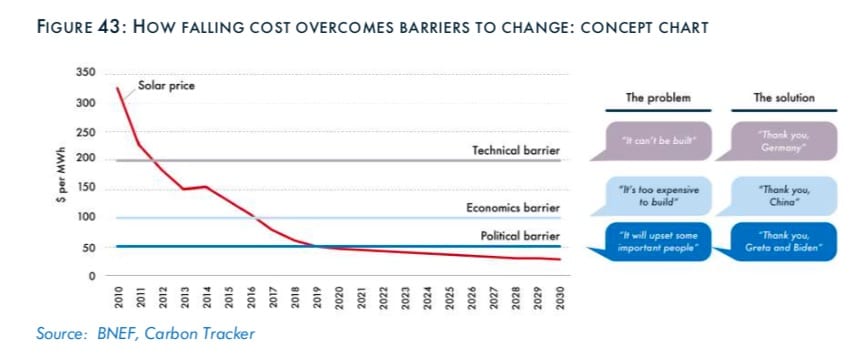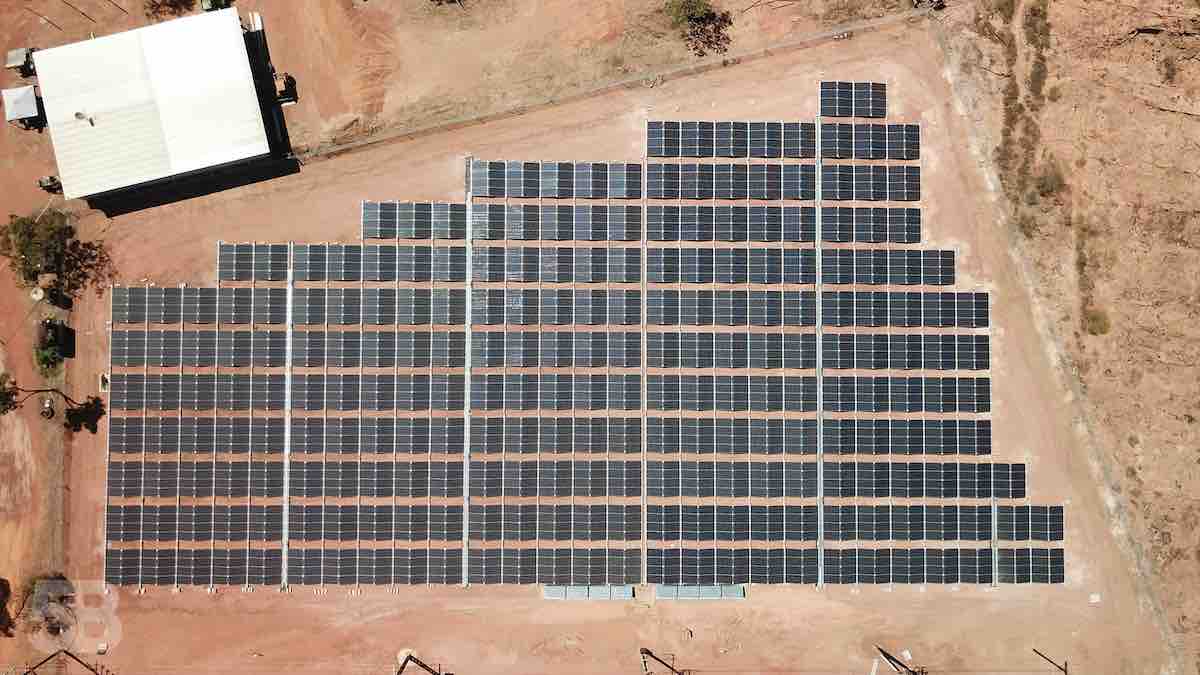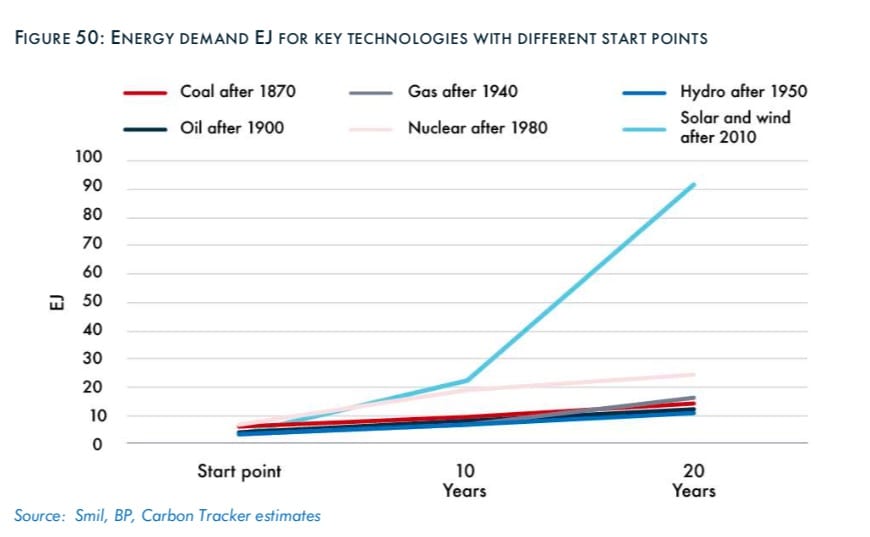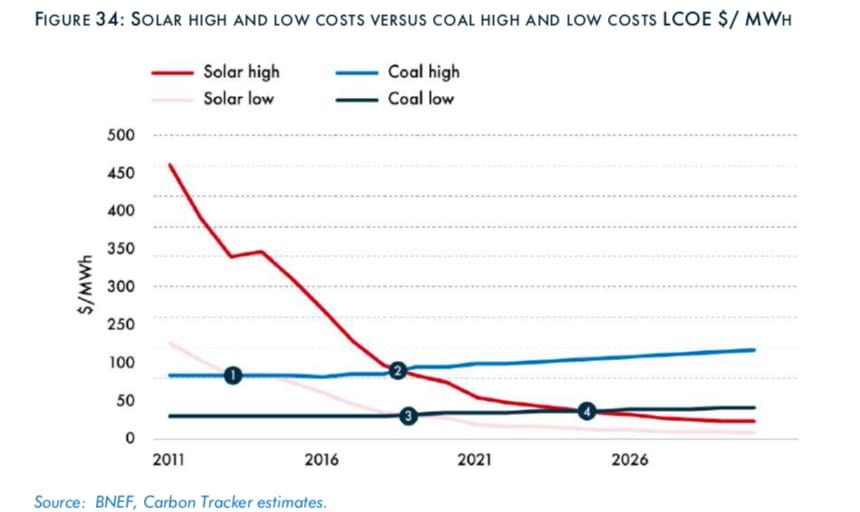One of the oft-sung laments about wind and solar is that they are not, will not and can not replace fossil fuel generation at the speed needed to meet the world’s climate targets, or even match the speed of the transitions to coal, nuclear or gas that have preceded them.
We are still at the beginnings of the wind and solar transition but it’s already clear that those claims are not true. The roll-out of of wind and solar in their first 20 years of deployment has, in fact, easily exceeded that of any technology that preceded them.
“The speed of growth of solar and wind has far exceeded that of any preceding technology at this scale,” research groups CarbonTracker and Ember say in their latest analysis titled “Sky is the Limit.”
“Solar capacity has been growing at a CAGR (cumulative annual growth rates) of 40% since 2000 and 28% since 2015. Over the last decade solar and wind together have been growing at a CAGR of 21%.
“In contrast, coal demand growth in the decade after 1870 was 5% a year; oil demand growth in the decade after 1900 was 7% a year; gas demand growth was 8% a year after 1940.
“And these differences matter a lot. At 21% growth, you double every 3.5 years. At 7% growth you double every 10 years. By which time the first source has enjoyed 3 doublings.”
Looked at in comparisons of scale, wind and solar easily outstrip every other technology. The only one that came close in its first decade after reaching the size threshold was nuclear, but the authors noted that in that case the growth stopped abruptly as the result of cost and safety issues.
And this is where Australia can play a key role, as Ketan Joshi reported on Friday. It is one of the most richly endowed nations in terms of wind and solar, and per capita it is in a “league of its own”, according to the report, with a resource potential of over 10,000 MWh per person per annum.
See also: Wind and solar could replace fossil fuels 100 times over, says new report
“With vast renewable potential and a low population, it is thus well positioned to become the battery of the world, even though we recognise that its geographic characteristics may not necessarily lend themselves for exports,” the report says.
Some of Australia’s richest business people have already recognised this potential. Mike Cannon-Brookes and Andrew Forrest are working on a plan to deliver 10GW of solar and more than 20GWh of battery storage in the Northern Territory, with an eye to a cable to supply Singapore and neighbouring countries.
They won’t likely stop there. The Sun Cable consortium says if it works in one instance, it will likely work in others, and it can see the scale of projects and the export potential working for other customers.
Forrest is also pursuing a grand vision to build a green hydrogen economy of up to 1,000GW, including 40GW in the Pilbara, where another consortium is looking to develop a 26GW wind and solar facility with similar goals of exporting green energy or green steel and other zero carbon products.
The reason they can be confident about this is that the cost of solar has already fallen dramatically over the past decade (around 90 per cent), and will continue to fall as new improvements are made to efficiency and manufacturing.
Low cost solar beat high cost coal nearly a decade ago, low cost solar beat low cost coal a few years ago, and within another three years even high cost solar will beat low cost coal.
If simple maths and economics are not enough, there are other significant factors, highlighted in the following graph.
This graph outlines the three main barriers to the switch to wind and solar – technical (“it can’t be built”), economic (it’s too expensive to build), and political (it will upset some important people).
The first two barriers have clearly already been broken. The last one remains, thanks to the power of “important people”, such as vested incumbent interests and conservative media. It is particularly prevalent and powerful in Australia, despite the speed and success of the early stages of the clean energy transition.
Listen to CarbonTracker’s Kingsmill Bond in our latest Energy Insiders podcast.













